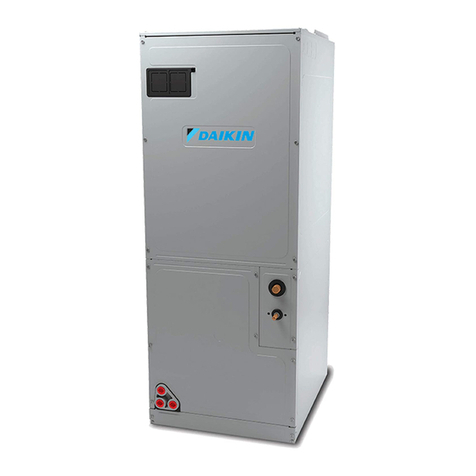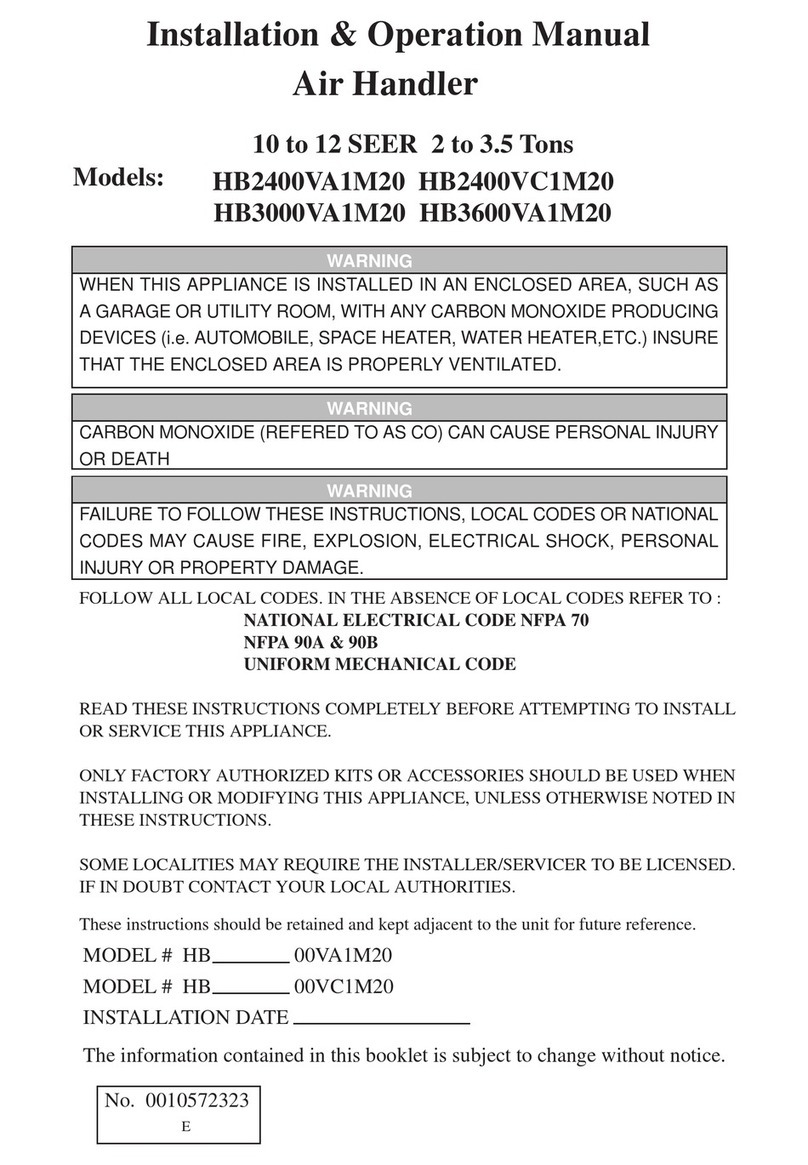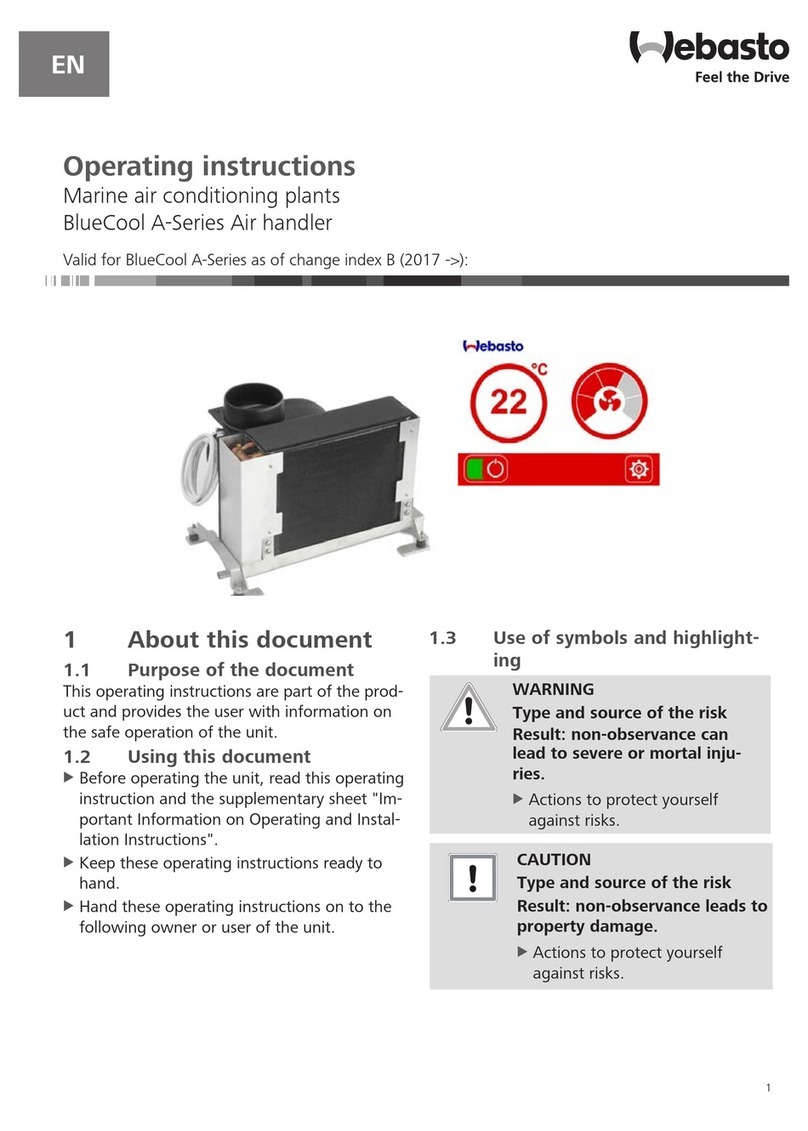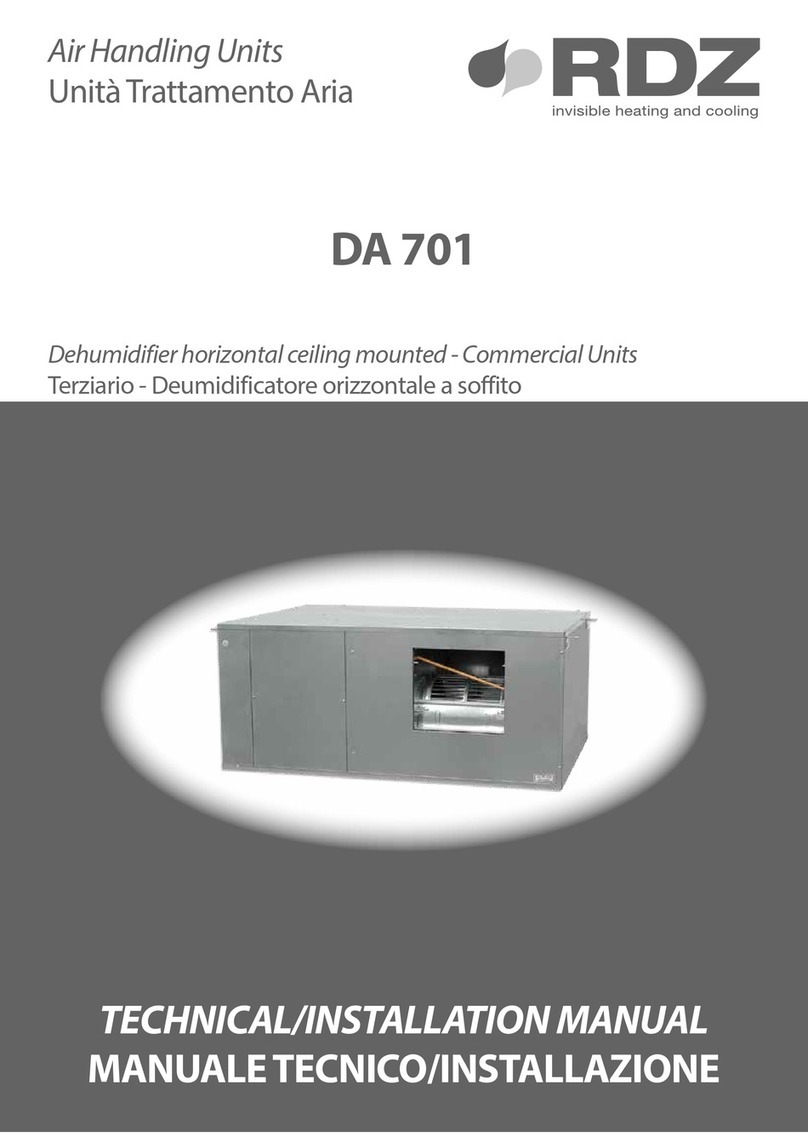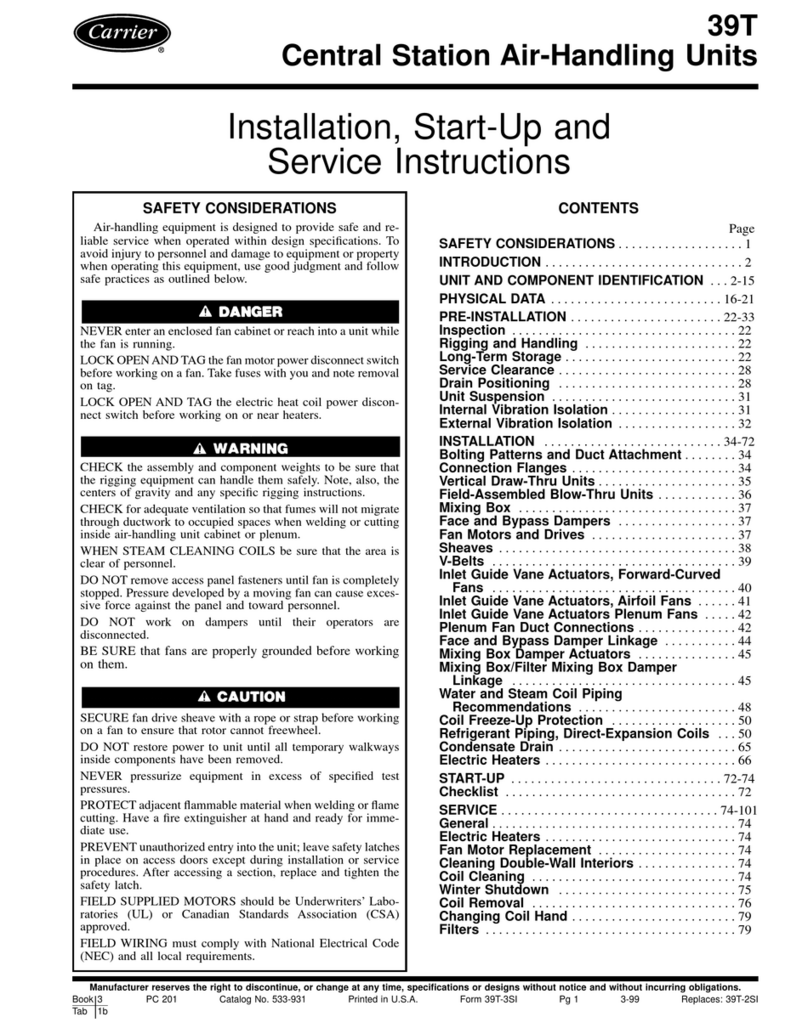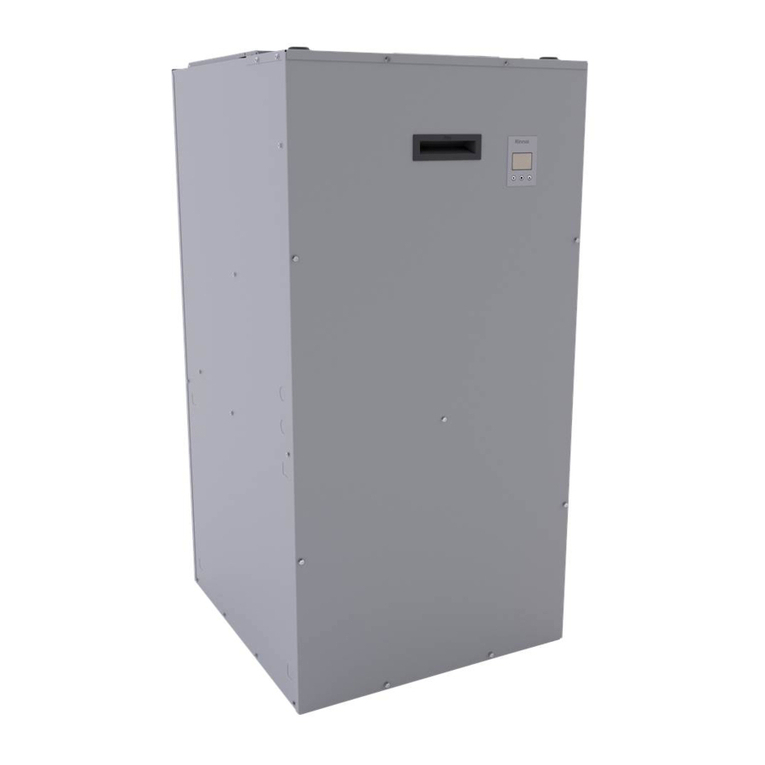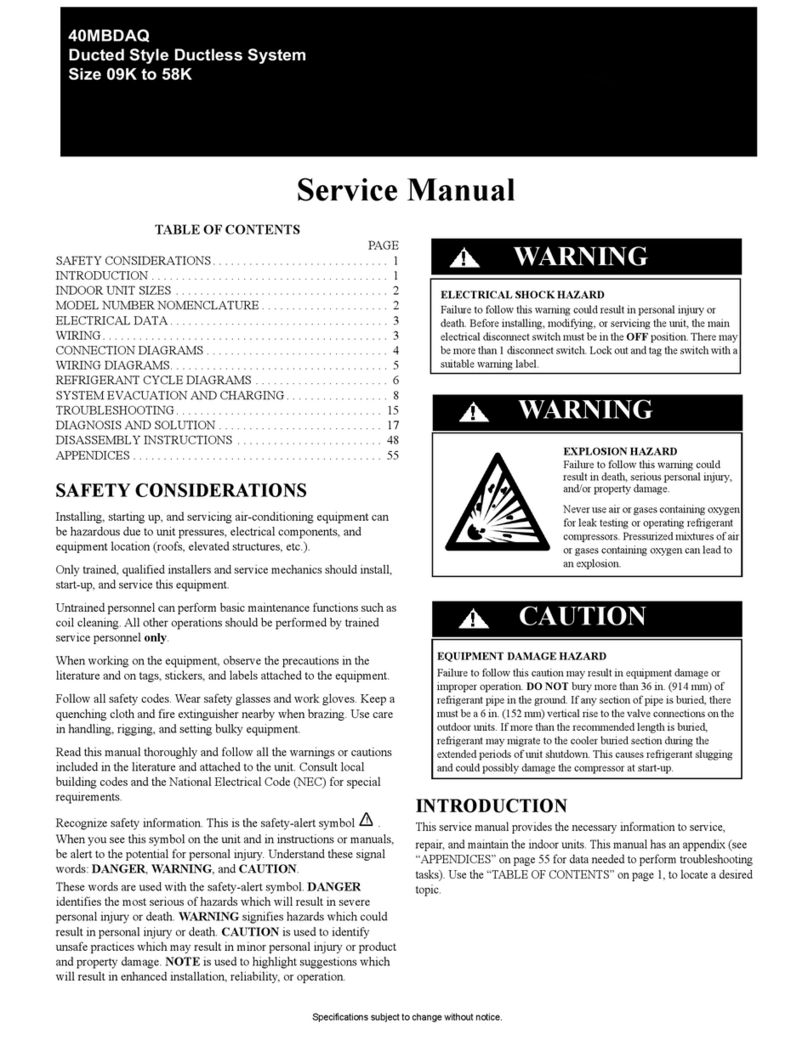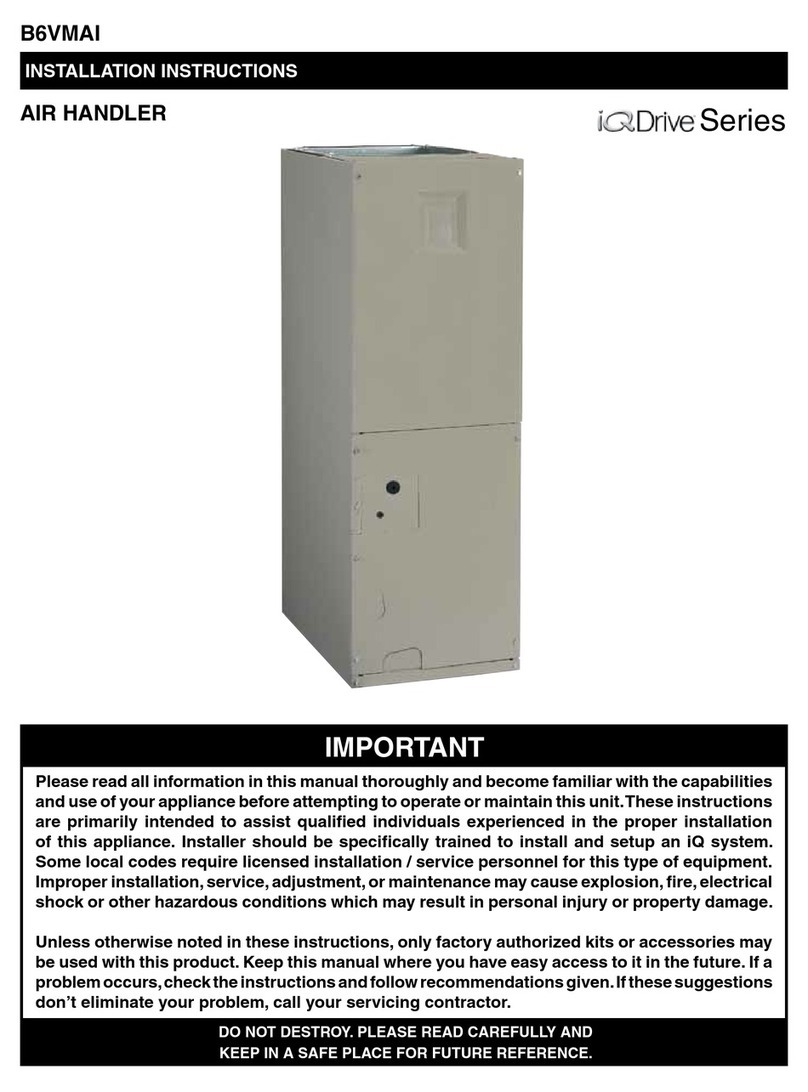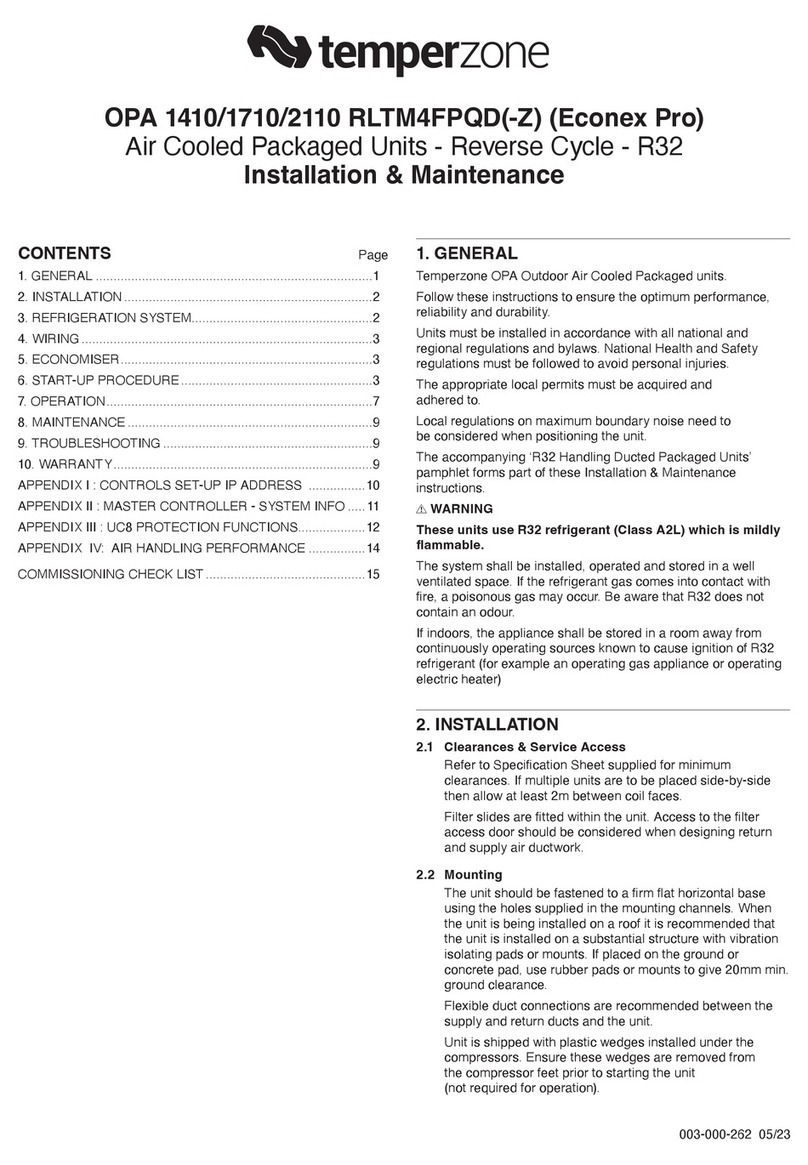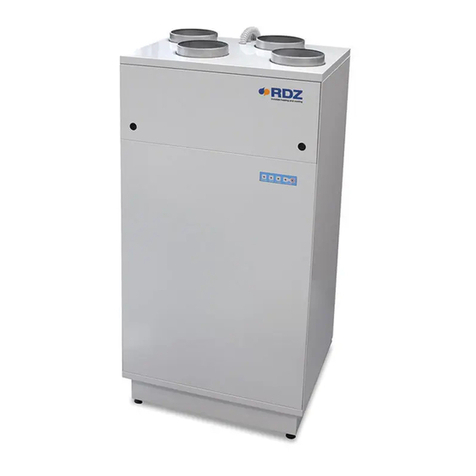
2 Rinnai Corporation Hydronic Air Handler 101 Training Manual
Installation Codes and Standards
The Rinnai Tankless Heating System
The Hot Way to Heat Your Home –
The Tankless Heating System combines the Rinnai tankless water heater and a new
hydronic air handler to provide comfortable residential heat. Now the energy savings
and endless hot water of a Rinnai tankless water heater can be applied to heating both
residential air and water.
How it Works –
The hydronic air handler connects to a Rinnai tankless water heater through normal
plumbing lines. When there is a call for heat, the air handler pump activates and begins
to circulate water between the air handler and the water heater. The hot water runs
through a copper tube/aluminum fin coil mounted above a blower, which drives air
through the coil and into the ductwork, providing comfortable, warm, hydronic heat that
can’t be matched by gas furnaces or heat pumps.
Product Codes and Standards
All national codes, standards and local ordinances must be adhered to in addition to the
instructions accompanying each product. The installation must comply with regulations
of the local building, heating, plumbing and other codes. Where local codes are not
applicable, the installation must comply with national codes and any and all authorities
having jurisdiction.
Suggested Codes and Standards for the United States and Canada:
General Installation –
Installation of Air Conditioning and Ventilating Systems NPFP 91
Duct Systems –
Sizing of duct system to be performed prior to product installation
Sheet Metal and Air Conditioning Contractors National Association (SMACNA)
American Society of Heating, Refrigeration, and Air Conditioning Engineers (ASHRAE)
Fundamentals Handbook Chapter 34 or HVAC Systems and Equipment Handbook
Chapters 9 and 16
US and CANADA; Air Conditioning Contractors Association (ACCA) Manual D
Acoustical Lining and Fibrous Glass Duct
US and CANADA; current edition of SMACNA; NFPA 90B as tested by UL Standards
181 for Class I Rigid Air Ducts
Electrical Connections
US: National Electrical Code (NEC) ANSI/NFPA 70.
CANADA: Canadian Electrical Code CSA C22.1
Plumbing Systems
US and CANADA: ICC International Plumbing Code (IPC); Uniform Mechanical Code
(UMC); Uniform Plumbing Code (UPC)





